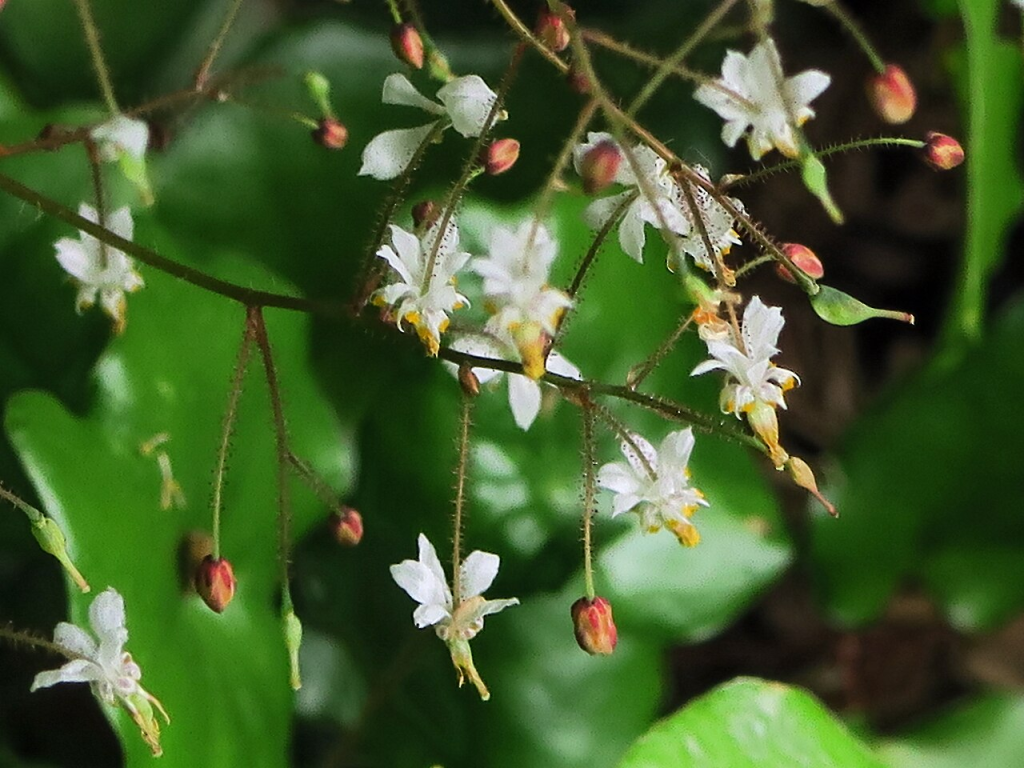
Also known as redwood ivy, this evergreen herbaceous perennial is a member of the barberry family, Berberidaceae, that also includes nandina, mahonia, and epimedium. It is native to northwestern California and southwestern Oregon where it grows in coastal forests, especially redwood forests. The plants grow up to 12″ tall from a rhizomatious root system and form a clump of leathery, glossy dark green compound leaves with 3 or 5 round to heart-shaped leaflets up to 1.5″ long and wide on long reddish petioles. In winter the leaves may take on a purplish to red color. The small pendent flowers appear in upright clusters of 20-50 in late spring to early summer. Each flower has 6 petal-like sepals that are white and reflexed, and 6 smaller white petals that are sometimes tinged with lavender. Although the plants prefer moist soils in the shade, they tolerate dry soil and are a good choice for a ground cover or in woodland, native plant, or shade gardens. The genus name, Vancourveria, honors George Vancouver, 18th century British naval officer who explored and detailed the northwest coast of America. The specific epithet, planipetala, comes from the Latin word planus, meaning double or full, and petala, the Latinized form of petal, referring to the number of petals.
Type: Evergreen herbaceous perennial
Bloom: Upright clusters of 20-50 pendent white flowers with white reflexed petal-like sepals in late spring to early summer
Size: 12″ H
Light: Part to full shade
Soil: Average, moist to dry, well-drained, acidic
Hardiness: Zones 7-9
Care: Cut foliage back at the end of winter to show off the clusters of flowers
Pests and Diseases: None of signficance
Propagation: Divide in spring or fall
Companion Plants: Pseudotrillium rivale, Rhododendron occidentale
Photo Credit: Wikimedia Commons